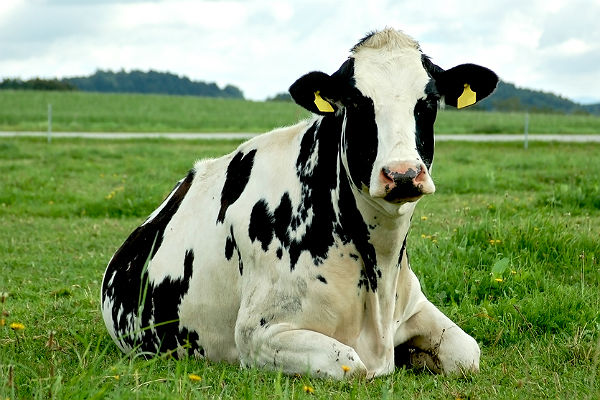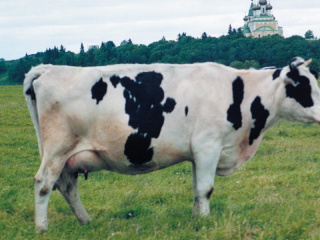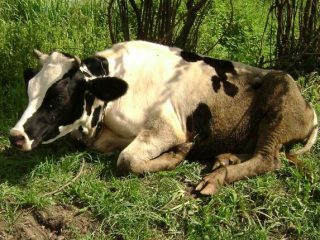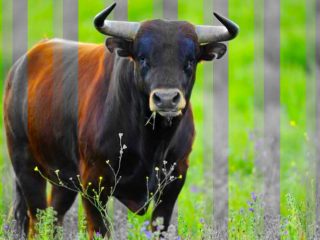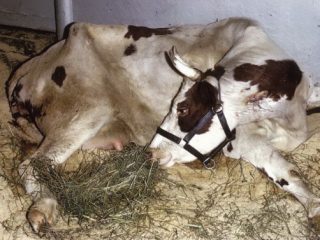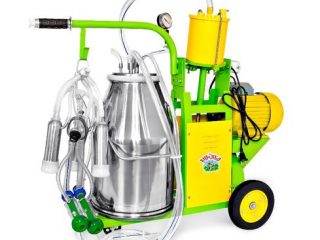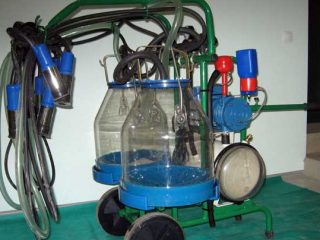Cattle have a rather complex stomach; as a rule, it includes 4 chambers. Initially, the food enters the animal’s oral cavity, after which, moving along the esophagus, it enters the rumen. The food in a liquid state passes into the mesh, after which it penetrates into the book, where the crushed food is dehydrated to a pulp state and the nutrients are absorbed into the animal’s body. The cow's rumen is located in the abdominal cavity on the left, which is important to know when studying its structure and functions.
Where is the rumen of a cow?
As you know, cows chew constantly; the lower jaw makes up to 50 thousand circular movements every day. Such behavior is usually due to the structural features of the digestive system of animals. The stomach prevents coarse fractions from entering the intestines, sending them back to the oral cavity. The cow grinds the returned fractions a second time, which is why she chews constantly, without breaks. The stomach includes 4 chambers, each of which is responsible for performing a specific function.
All coarse particles of feed from the cow's mouth enter the rumen. The rumen is the largest part of the stomach, capable of holding up to 150 liters. The scar is located in the abdominal cavity, on the left side.
Scar structure
If we consider the structure of a cow’s rumen, it is worth noting that it consists of several sections:
- dorsal;
- ventral;
- cranial.
They are called bags, which are connected to each other by longitudinal grooves. The grooves are covered with mucous membrane from the inside and are responsible for the formation of muscle traction. The largest bag in the rumen is the dorsal one; it has a horizontal position in the abdominal cavity.
The ventral sac is located in close proximity to the pelvic part; it is in a vertical position.
The cranial sac is located in the lower part and occupies a horizontal position in relation to the dorsal one. As a rule, if pathologies are observed in the gastrointestinal tract, then food stagnates in the cranial sac. The ventral and cranial sacs, in contrast to the dorsal sac, are much smaller in size.
As is known, glands are completely absent in the rumen, and the upper part of the mucous membrane is densely covered with papillae, which help to increase the absorption surface of the proventriculus. Digestion of food is carried out due to the fact that food is influenced by beneficial bacteria and other microorganisms:
- the forestomach contains about 7 kg of beneficial bacteria, which occupy 10% of the total volume. They take part in the breakdown of starch, proteins and fats. For the growth of bacteria, it is necessary to provide the cow with a sufficient amount of clover and timothy;
- In total, there are about 23 types of fungi in the rumen, usually mold and yeast, which affect cellulose. Thanks to fungi, vitamin B is produced;
- If we consider microorganisms, there are up to 2 million of them per ml. They are directly involved in the digestion of rough and dry food. Thanks to ciliates, proteins are synthesized, which enter the cow's body from food.
Functions
Hay is the main feed that cows need to feed. If the food is rough, a “pillow” will begin to form in the abdominal cavity, which is constantly shaken when the muscular walls act on it. The food is gradually moistened, after which it swells and is crushed. After hay, animals are given succulent food or dry mixture.
If a cow is initially given dry food, and then immediately succulent food, then the food quickly begins to sink into the liquid contents of the rumen. There it will settle on the walls, and the mixing process will be quite complicated. As a rule, the rumen microflora has only a partial effect on the swollen feed that passes through the mesh and proventriculus. The bolus of food moves as quickly as possible.
Thus, the animal’s body does not receive sufficient nutrients, as they are excreted along with the feces. Giving the cow dry food first can significantly disrupt the acid-base balance, which can result in acidosis.
The following processes take place in the area of the proventriculus:
- fiber is broken down into glucose;
- starch is converted into glycogen and amylopectin, the formation of volatile and non-volatile fatty acids occurs;
- proteins are broken down into amino acids and simple polypeptides, and the process of ammonia release begins;
- Thanks to the influence of the microflora of the rumen and stomach, vitamin B is synthesized. In addition, vitamins of group K begin to be formed.If the functioning of the rumen is impaired, vitamins are introduced into the cow’s body through injections.
Most nutrients enter the cow's body through the teats, which are located on the mucous membrane of the rumen. The remaining substances enter the intestines through the proventriculi, from where they are further distributed by the blood to all organs. It is important to take into account that the work of the cow's rumen is accompanied by abundant release of gases.
If the development of diseases is observed, gases will begin to accumulate in the area of the cranial sac, which is located in the lower part on the left side. That is why the animal is massaged in this part of the abdomen. Experts recommend approaching the issue of animal nutrition as responsibly as possible. This is primarily due to the fact that when the microflora of the stomach and rumen is disturbed, various pathologies begin to actively develop.
Conclusion
A cow's rumen is located on the left side of the abdominal cavity. This section of the stomach is considered the largest. Due to the fact that bacteria and microorganisms act on rough food, a fermentation process occurs, after which the food begins to break down.
